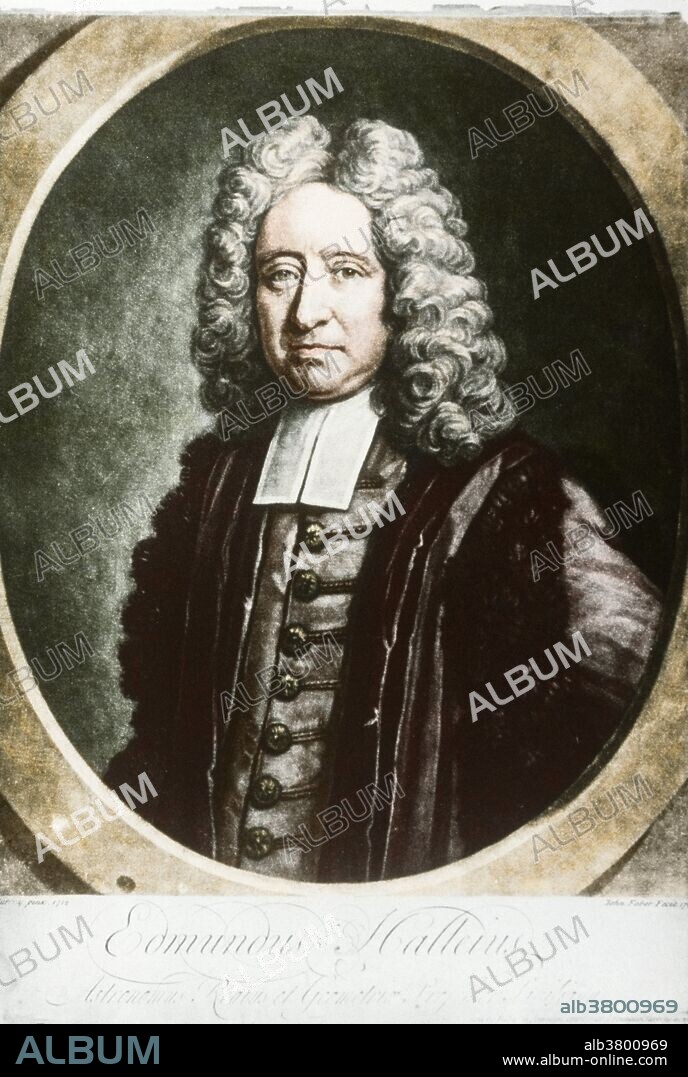alb3800969
Edmond Halley, English Polymath

|
Add to another lightbox |
|
Add to another lightbox |



Title:
Edmond Halley, English Polymath
Caption:
Edmond Halley (1656-1742) was an English astronomer, geophysicist, mathematician, meteorologist, and physicist who is best known for computing the orbit of the comet that was named for him. In 1676, Halley visited the south Atlantic island of Saint Helena and set up an observatory with a 24-foot-long telescope so he could study the stars of the Southern Hemisphere. In 1678 he published Catalogus Stellarum Australium which included details of 341 southern stars. In 1686 Halley published the second part of the results from his Helenian expedition, being a paper and chart on trade winds and monsoons. In this he identified solar heating as the cause of atmospheric motions. He also established the relationship between barometric pressure and height above sea level. His charts were an important contribution to the emerging field of information visualization. In 1691, Halley built a diving bell, a device in which the atmosphere was replenished by way of weighted barrels of air sent down from the surface. In 1718 he discovered the proper motion of the "fixed" stars by comparing his astrometric measurements with those given in Ptolemy's Almagest. He was the second Astronomer Royal in Britain. A position he held until his death in 1742 at the age of 85.
Credit:
Album / Science Source
Releases:
Model: No - Property: No
Rights questions?
Rights questions?
Image size:
2550 x 3795 px | 27.7 MB
Print size:
21.6 x 32.1 cm | 8.5 x 12.7 in (300 dpi)
Keywords:
1656 • 1676 • 1678 • 1686 • 1691 • 1718 • 1742 • 17TH CENTURY • 18TH CENTURY • 18TH CENTURY, THE • 18TH • ART • ARTWORK • ASTRONOMER • ASTRONOMY • CATALOGUS STELLARUM AUSTRALIUM • CELEBRITIES • CELEBRITY • CHART ON MONSOONS • CHART ON TRADE WINDS • COLORIZED • COMET, HALLEY'S • COMPUTED ORBIT • DISCOVERED • DIVING BELL • DRAWING • E. HALLEY • EDMOND HALLEY • EDMUND HALLEY • ENGLISH • ENGRAVING • ENHANCEMENT • EUROPEA • EUROPEAN • FAMOUS • FIGURE • GEOPHYSICIST • GEOPHYSICS • HALLEY'S COMET • HALLEY • HALLEYS COMET • HISTORIC • HISTORICAL • HISTORY • ILLUSTRATION • ILLUSTRATIONS • IMPORTANT • INFORMATION VISUALIZATION • INVENTOR (MALE) • INVENTOR • MALE • MAN • MATH • MATHEMATIC • MATHEMATICAL • MATHEMATICIAN • MATHEMATICS • MEN • METEOROLOGIST • METEOROLOGY • METEOROLOGY • MOTION OF FIXED STARS • NOTABLE • PEOPLE • PERSON • PERSONALITIES • PERSONALITY • PHYSICIST • PHYSICS • POLYMATH • PORTRAIT • POTRAIT • ROYAL ASTRONOMER • SCIENCE • SECOND ROYAL ASTRONOMER • WEATHERMAN • WELL-KNOWN
 Pinterest
Pinterest Twitter
Twitter Facebook
Facebook Copy link
Copy link Email
Email

